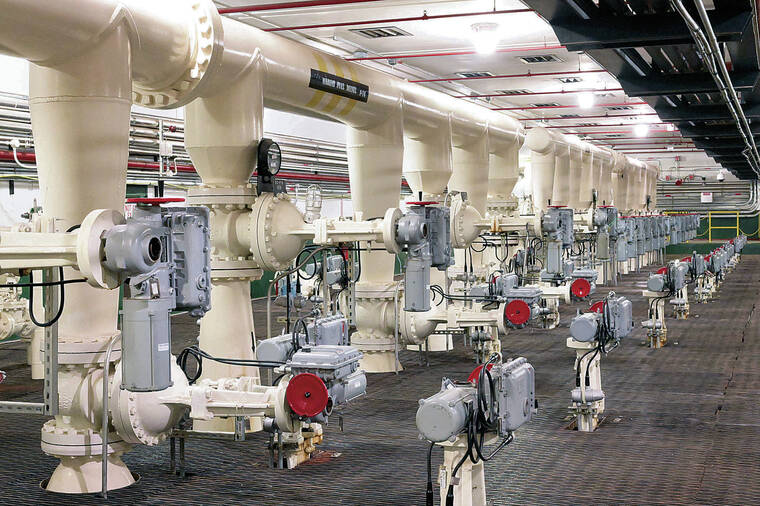The poisoning of military families’ drinking water at the Red Hill Shaft is the inevitable consequence of trying to maintain a decrepit bulk fuel storage facility. Aside from getting those families back on clean water, the most pressing need now is to immediately design and relocate a modern bulk fuel storage facility, as has been done in Manchester, Wash., and San Diego, Calif. The short-term plan must be to begin defueling from the Red Hill tanks to safer temporary storage. It is the only way to avoid another — or worse — episode.
Unfortunately, our public focus on “leaky tanks” misleads us about what is a primary threat. The famous Aloha Tower-sized tanks have been leaking since 1947, without showing action levels in the drinking water from the Red Hill Shaft. Those tanks are not the source of the current contamination of our neighborhoods. The whole system is corroding from jet fuel use, and now a series of system failures — still not yet fully identified — has directly contaminated the drinking water well, perhaps permanently.
The truth is that general contamination of the Honolulu drinking water supply, which is thankfully across some underlying geological barriers, has been unlikely, and the threat of poisoning all of Honolulu overblown. The Honolulu Board of Water Supply made a wise tactical decision in temporarily closing major portions of its Honolulu drinking water supply. The shocking event at the Red Hill Shaft was unprecedented and unexplained. Subsequent discovery of jet fuel in the fire suppression system bears out a potentially far more catastrophic failure.
We need to shift focus to very real possibilities. Too many things do go wrong with the fuel facility, and the Navy cannot prevent them. We simply cannot trust it any more. The system is old and deteriorating. No one could properly manage it. We must all stand together in an abundance of caution. It’s time to rethink the refueling idea, and it’s time to shut down this museum piece while we’re ahead. Now — not in 2045. Can we afford another “human error”?
Discovering fuel in the fire suppression raises a new range of frightening possibilities. We had not yet contemplated a blown-out hillside, a wildfire raging out of control, possibly blanketing the entire Ewa plain in toxic black clouds. Moreover, the fire suppression system contains polyflouroalkyl substances (PFAS) — forever and everywhere chemicals that are linked to cancer.
The public narrative needs to catch up with this reality, to move past the unlikely “total aquifer” story. We face multiple imminent local threats from an aging, corroding system of pipes, valves, drains, sumps, etc., without an adequate alarm system. The Navy has shown it can only act after the fact. That’s a show-stopper — it’s time to close the curtain on this facility.
As for “national security,” it’s not clear that Red Hill’s “surge capacity” is even possible, given the growing propensity to multiple failures. Our adversaries surely know this. The real “national security threat” is that the Navy has managed to alienate the public it supposedly serves. Other potential disasters are out there, and by current standards, we will be caught with our pants down again.
All Hawaii stands together behind our communities. The Precautionary Principle and Aloha ‘Aina rule in Hawaii. Kapu aloha reigns. The abused public knows we can do better, even if the Navy hasn’t figured it out.
Charley Ice is a retired hydrologist with the state Commission on Water Resource Management (25 years).

